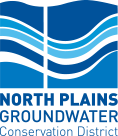Brush Management
Brush Management as Described by the Texas Water Development Board
“Brush Control/Management includes the removal, reduction or manipulation of nonherbaceous plants by mechanical methods, chemical treatment, biological methods, prescribed burning, or combinations of these methods to achieve the desired plant community.” To read more information from the Texas Water Development Board, you can click here.
Integrated Brush Management Systems for Texas
Texas A&M AgriLife Extension identifies that “The first step in considering brush management strategies is to determine if a problem exists. “Brush” has often been described as a dense growth of bushes, shrubs and small trees. There is little question that brush has increased in density and distribution in areas that were once open grasslands. (Some land management practices have contributed to brush invasion.) Where this has occurred, brush plants are usually labelled as pests.” There is more information on it here.
Specific information on how to manage each type of brush is available here thanks to Texas A&M AgriLife Extension.
Salt Cedar Brush Management
Supplementing Federal Cost-Share Speeds On-the-Ground Conservation
Location: South-Central / South-West Region: Texas
Project Summary: Texas Landowners with federal cost-share funds are eradicating Salt Cedar in sections of the Canadian River to increase flow and benefit listed fist species.
Innovation / Highlight: The advancement of conservation by matching Federal cost-share funds with municipal funds to achieve goals.
Resource Challenge: The Canadian River, largest tributary to the great Arkansas River, originates in the mountains of Colorado, flowing 760 miles to Lake Meredith impoundment 45 miles northeast of Amarillo. The reservoir supplies eleven communities and 500,000 people with drinking water. Low water levels have shrunk the impoundment by several thousand acres.
Lower water levels in the reservoir reflect lower water levels in the river. One of the prime risk factors is the tamarisk, or Salt Cedar, a non-native plant that invades drainage’s along the rivers in Texas and the southwest. A deep-rooted plant, a single specimen can absorb as much as 200 gallons of water from soil each day – water that normally would have entered the river.
The Arkansas River Shiner, a federally threatened species with habitat in three Texas Counties, depends on a healthy flow of water in the Canadian River. In the 1950’s, the plains minnow and Arkansas River Shiner make up more than 90 percent of the fishes in the river; in 1996, each species comprised less than 1 percent.
Objectives:
- To increase flow in the Canadian River and its’ tributaries within the Lake Meredith watershed.
- To increase water quality in the Canadian River.
- Create a better habitat for the Federally listed Arkansas River Shiner
Results of Aerial Application (Summer 2004)
- One large salt cedar can use up to 200 gallons of water per day.
- One acre of salt cedar can use up to 3 to 7 acre feet of water per year.
- There are approximately 2,000 acre feet of water used by salt cedar per year.
- That is approximately 6,000 to 14,000 acre feet of water used by salt cedar per year.
- CRMWA treated 760 acres on the Canadian River and Revuelto Creek and an additional 90 acres on two other tributaries in New Mexico.
How are we going to monitor the project?
- Continue conducting flow measurements.
- Installing shallow monitoring wells.
- Establishing vegetation monitoring sites.
- Chemical analysis of the water in the river
Results and Accomplishments: The centerpiece of the restoration and reclamation plan is removal and control of the salt cedar. A chemical control program was designed to complement biological control. The NRCS provided Environmental Quality Incentives Program (EQIP) cost share funds to local producers to remove tamarisk. The Canadian River Municipal Water Authority supplemented EQIP funds, encouraging more landowners to participate, which upped the number of acres treated. The FWS endorsed the project as a way to document that a reclamation and restoration plan was being implemented. Other organizations supported the salt cedar control project by providing outreach and information.
About $324,000 in EQIP funds were dedicated to controlling salt cedar; the CRMWA matched the funds with an additional $108,000. All told, 2,000 acres were treated – more than 50 percent of the infested acres – in just the first year of the program. Funds went to eleven producers.

